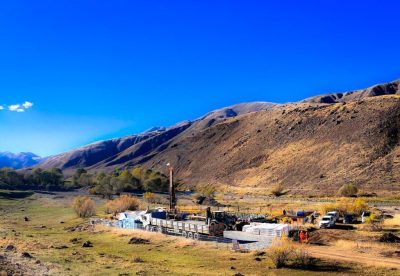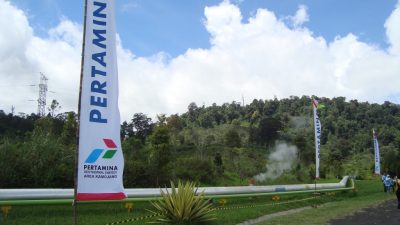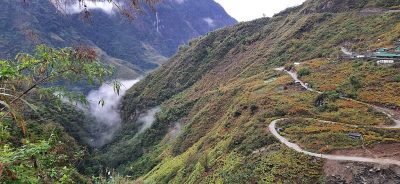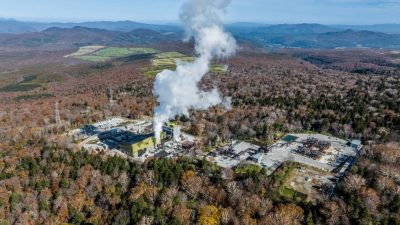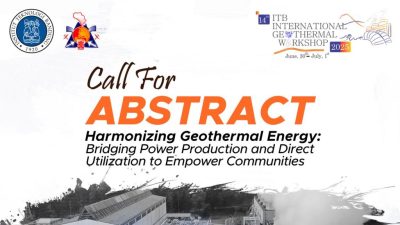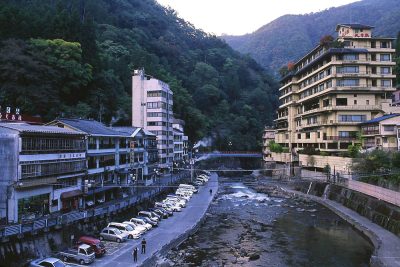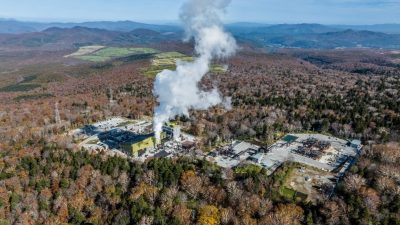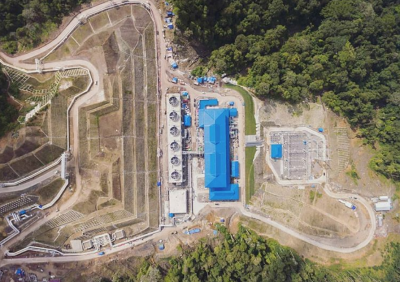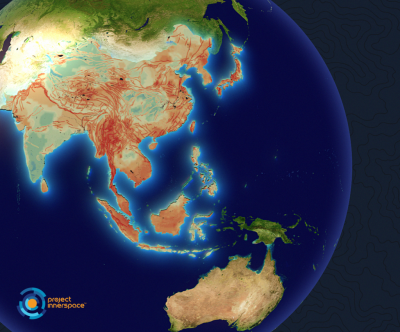Geodynamics reports on status on Habanero 4 Well and exploration projects
In its quarterly activities report, Australian Geodynamcis draws a very positive picture of its activities at its Innamincka Deeps EGS project and the Habanero 4 well, as well as newly acquired interest in the Savo Island project in the Solomon Islands.
In a recent quarterly update, Geodynamics reports progress on its different projects, namely the Innaminkca Deeps EGS project, Habanero 4 well testing, as well as its exploration projects on Savo Island, Gove Peninsula and Hunter Valley.
In general the companies reports a “very positive quarter, with activities predominantly focused on reservoir testing at the Habanero Project. A series of open flow tests were completed with encouraging results, as well as a major stimulation at Habanero 4. It also saw the acquisition of its first international project, through the signing of an earn-in joint venture with Kentor Energy.
The company also reports a cash position of A$24.7 million at the end of the quarter.
Innamincka Deeps EGS Project Update, Habanero 4 Well Testing and Reservoir Development
Following completion of the well and installation of the temporary open flow system, Habanero 4 was opened up for clean-up flow on 17 October. This initial flow was designed to flush drilling mud out of the well bore and leave the well ready for open flow testing. The well performed as expected and over four days of intermittent operations produced approximately 1,100 m3 of completion brine, drilling mud and formation brine into a lined pit on surface. The maximum rate recorded during this clean-up flow was approx 30 kg/s and the maximum flowing temperature recorded at surface was 203°C. After this clean-up flow the well was shut in whilst the equipment for testing and stimulation was assembled on site.
The first open flow test commenced on 10 November. A new pressure and temperature sonde, designed for long-term use in high temperature wells, was deployed in the hole. Unfortunately, even though the sonde had been tested earlier in a high temperature well, it failed at Habanero and had to be removed without recovering any useful data. An alternate, older technology, pressure and temperature sonde was deployed instead. This device performed well, although it could only be left in the hole for a few hours to avoid overheating.
The first open flow test included flow at several rates to investigate the flow behaviour immediately around the well bore. Fluid samples were captured at surface and also down hole using custom-built titanium fluid samplers. The final high rate flow period achieved a flow of approximately 35 kg/s for 52 minutes. Flowing wellhead pressure declined slowly during this high rate test, reaching 27.7 MPa (4,020 psi) before the well was shut-in.
On 13 November, an initial, local stimulation of the well commenced. Over two days, 2.5 ML (15,800 bbl) of fresh water was pumped into the well at various rates. The maximum rate pumped was 52.5 L/s (19.8 bbl/min) at a maximum surface pressure of 44.2 MPa (6,411 psi). The apparent injectivity recorded in this local stimulation is approximately four times that recorded at Habanero 3 in 2008. The seismic network recorded over 1,900 seismic events during this local stimulation, with a maximum event magnitude (ML ) of 1.9.
The second open-flow test commenced on 15 November and again included flow at several rates, similar to the sequence in the first flow test. Flowing pressures were noticeably higher during this second test, indicating improved connection between the reservoir and the well bore as a result of the local stimulation. The final high rate flow period achieved a stable rate of approximately 38 kg/s for 84 minutes with flowing well head pressure declining slowly to a minimum of 29 MPa (4,200 psi). From these test results it is clear
that even higher open flow rates could be delivered by Habanero 4 if larger draw down pressure were applied.
On 17 November, a second, extended stimulation of the well commenced. Over 14 days of continuous pumping, 34.2 ML (215,000 bbl) of fresh water was injected into the well at increasing rates. The maximum rate pumped was 48.0 L/s (18.1 bbl/min) at a maximum surface pressure of 49 MPa (7,000 psi). During the extended stimulation and subsequent pressure decline, more than 24,000 seismic events were detected with a maximum event magnitude (ML ) of 3.0. The figure below shows the areal extent of the detected seismic events from both the local and extended stimulations, extending up to 1,500 metres away from the well.
The data from the well tests and the stimulations is currently being processed and analysed to further understand the behaviour of the fracture system at Habanero. The reservoir is being allowed to re-establish equilibrium conditions before conducting a third open flow test, estimated to be carried out in March 2013.
Savo Island Geothermal Power Project
The signing of a two stage earn-in and joint operating agreement with Kentor Energy Pty Ltd, a subsidiary of Kentor Gold Ltd, was announced in November. Under the agreement, Geodynamics can acquire up to a 70% interest in a conventional geothermal power supply project in the Solomon Islands.
The agreement specifies that, Geodynamics is entitled to earn an initial 25% interest in the Savo Island Geothermal Power Project following the completion of initial geophysical studies to determine target locations for a drilling program. The Company has the right to earn an additional 45% interest through exploration drilling and the completion of a feasibility study for the project.
Honiara, the capital city of the Solomon Islands has a current maximum demand of 14 MW. Local electricity is derived from high cost diesel resulting in consumers having to pay among the world’s highest prices for power, currently around A$0.80 per kWh*. Additional customer demand for the geothermal project is possible through supply to the Gold Ridge Mine, recently acquired by St Barbara Limited.
The project has strong support from the local community on Savo Island, as well as the Central Province Assembly and the Solomon Islands Government. A Surface Access Agreement has been signed and is in place with customary landowners on Savo to undertake initial fieldwork and surveying.
A 3D MT (magneto-telluric) survey was completed in October 2012 by Fugro Ground Geophysics Pty Ltd. Geodynamics is targeting release of a maiden inferred resource statement for the project by June 2013.
Gove Peninsula
During the quarter initial desktop exploration and geological data was received and is currently being reviewed. Geodynamics also met with representatives of Gulkula Mining and Pacific Aluminium to discuss project development. Geodynamics is currently awaiting the decision on the future of the Pacific Aluminium’s alumina refinery, and as such are not planning on undertaking any immediate activities in the
Northern Territory.
Hunter Valley
As reported, Geodynamics continues to concentrate its activities on the Innamincka Deeps EGS project and the plans to progress other prospective opportunities the Savo Island Geothermal Project and the Gove Peninsula Direct Heat Geothermal Project. Given this, Geodynamics has no immediate plans for exploration drilling in the Hunter Valley permits due to the high risk nature of this exploration activity. The company and has elected to withdraw from both the NSW Renewable Energy Fund grant which was awarded to the
project by the NSW Government Office of Environment & Heritage and the Geothermal Drilling Program grant which was awarded to the project by ARENA. Neither of these grants had been drawn upon since they were awarded.”
Source: Company release (pdf)







